Friends over at cyclingtips have compiled lists of products they’ve liked during the year, eg tech editor James Huang, and so a bit of a copycat article with some things that have been useful for riding and stage previews.
Onigiri mold
Can you guess what the item above is? It’s an onigiri mold. This may not make things any clearer. Onigiri are rice balls and a ubiquitous snack in Japan. After you’ve cooked some rice and it’s still warm you can make them by hand… but the mold is quick and lets you compress a alot of rice to provide a dense energy ball. Typically fillings in Japan would be pickled plum or mustard leaves but you can add what you like, from dried fruit to salty peanuts. Wrap in paper or plastic film and it’s cheap real food that fits in your pocket.
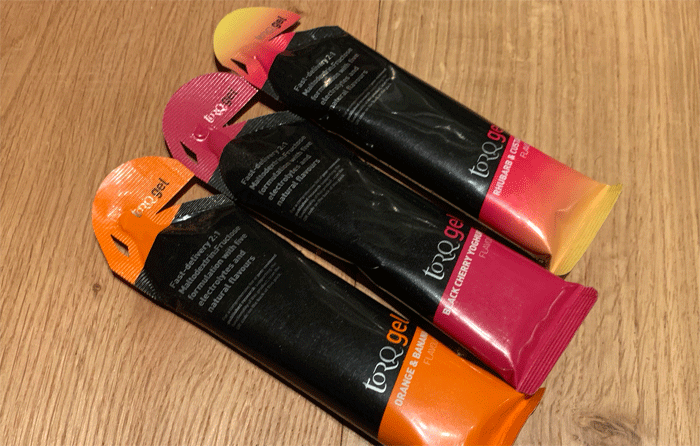
Torq gels
Gels aren’t exciting, they’re utilitarian but the Torq ones have such a concentrated taste that consuming one feels like you’re tasting some wonder of molecular cuisine, a gourmet moment for ten seconds. I’ve yet to rip one open at home as a snack but they’re decent for instant fuel on the road.
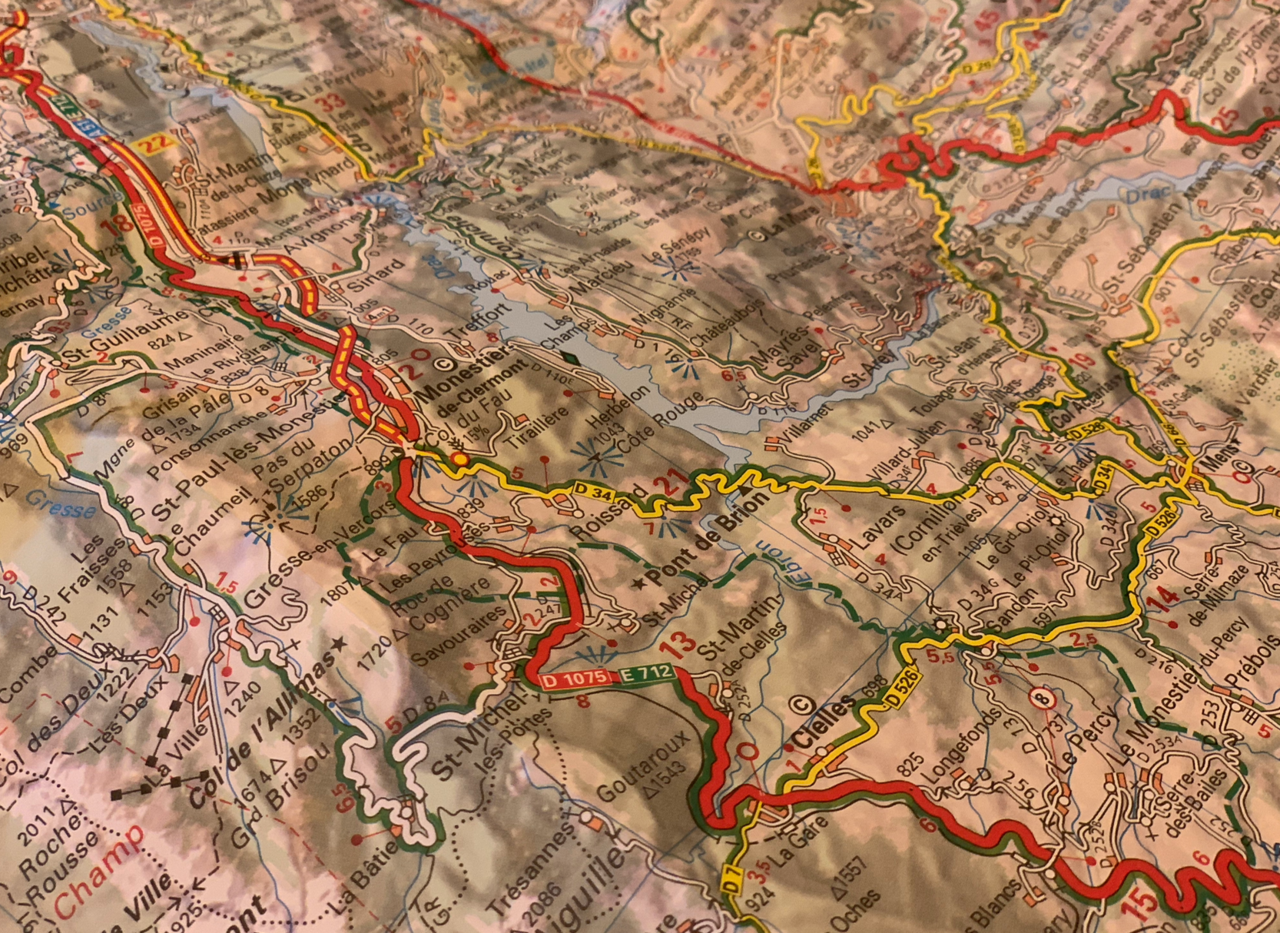
Michelin maps
There’s a certain pleasure in reading maps. The formal precision of the cartography can be enjoyable but the fun begins when the imagination takes over and you plot a route across the landscape. Michelin’s 1:200,000 scale maps are ideal for road cycling and there’s an analogue pleasure in unfolding them over a table that you can’t get from looking at the same map on a screen.

Club des 100 Cols archives
Races are like advancing armies, they rename the land as they see fit. ASO especially labels every hill by the formula “Côte-de-Nearby-Village” when maps and locals often use a different name. The Club des 100 Cols is a French club for those who have ridden 100 cols – disappointingly in a lifetime as opposed to per year – but a great initiative especially as non-members can benefit from all their geography homework because they’ve catalogued every mountain pass going. The 100 Cols handbooks lists mountain pass, from road going ones and then various grades from asphalt to “rideable” to off road, “pushable”, “carryable” and then the wildest ones, fun if you want to plan a gravel extravaganza. For previews here it means knowing the real name of the climb and exactly where the pass sits compared to where a race might place the KoM point because of a convenient car park.
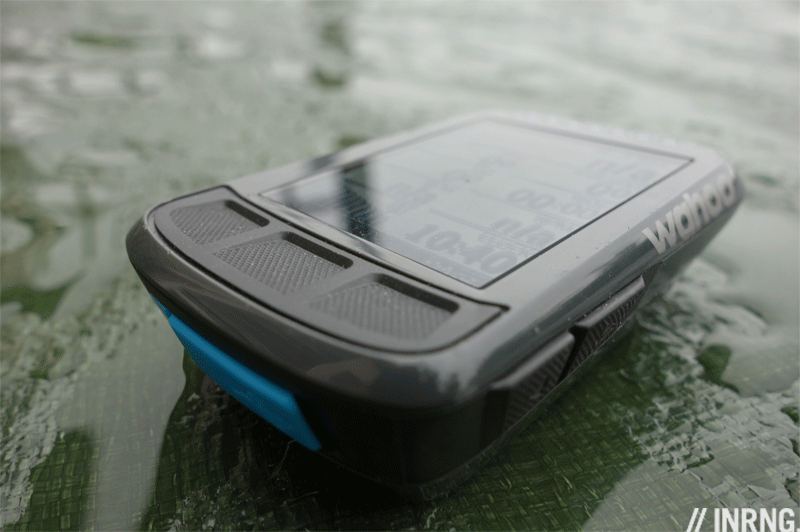
Wahoo Element bolt
I used a Garmin but the battery life was a hassle, you’d have to think about managing the device’s energy when you’d rather worry about your own; or just enjoy the views around. The Wahoo Element got a better review. It feels more practical than wonderful but being able to load the route of a stage is useful as you don’t have to keep the whole route in your mind, or carry a map/reach for your phone.
Mapping software
Trace a route to ride isn’t as fun as running a finger over a Michelin map but the software can add other things. For example Openrunner allows you to use different maps and they also have every pass, road or offroad, included when many maps might skip these, at least for the likes of Italy, France, Spain and so on, all from the 100 Cols club’s database. There’s the added bonus of work out vertical gain for races when the figure isn’t published… or even when it is because often the supplied number from the race is off, and by some way. This was a recurring theme from the Vuelta earlier this year.
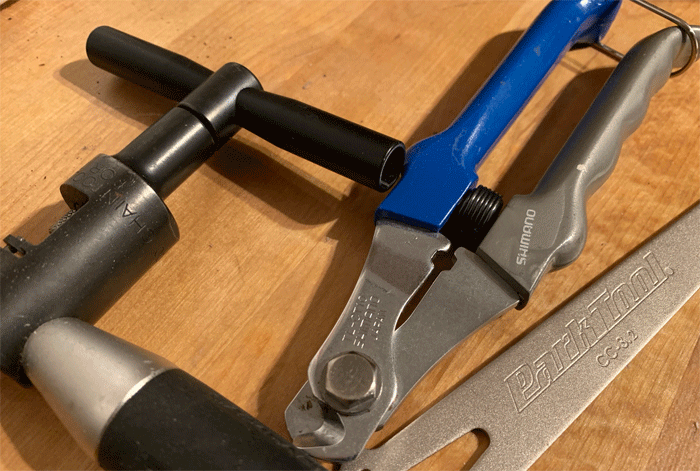
Tools
Having a toolbox at home means you can fix your bike quickly and replace worn parts as and when needed. A basic set might set you back a couple of hundred euros, dollars or pounds but you’ll get the money back quickly, and not just in saved fees at your bike shop but being able to spot problems in time, for example replace a worn chain before it starts to ravage your cassette and chainring. Learning how to fix your bike – and there are many youtube tutorials – has so many collateral advantages, and you will be able to spot small things before they turn nasty and even ruin a ride that you’ve planned for weeks.
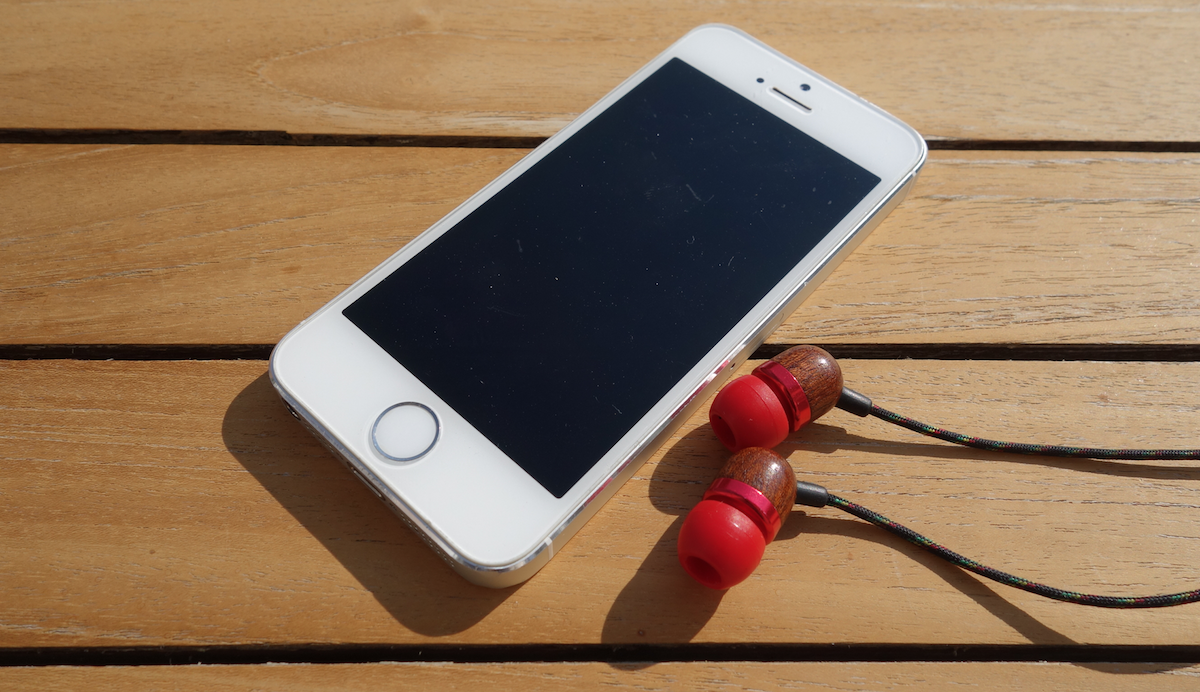
Iphone
Any smartphone will do but the almost retro iPhone 5 fits nicely into a jersey pocket, and then into your palm allowing you to use it one-handed during a ride for brief moments. For this blog it means recording voice memos with immediate impressions of climbs and descents, corners and more. A notepad and pencil would mean stopping to write, while trying to remember things to type up late sounds good but after a long ride details will be forgotten. The battery life isn’t great but all the more reason to turn it off or put it into flight mode during a ride to save you from distractions. Stop for a coffee or food and you can pull out your phone and maybe watch a bike race… or zap ranty blog comments.
Cheapo jacket
What’s the biggest improvement in cycling technology in the past decade? You could cite electronic gearing, power measurement or the gameification of training with Strava but I’d argue for clothing. You can now go out for a ride when it’s below freezing, ride unrestricted thanks to minimal bulk and few layers, and still return home comfortable thanks to improved modern textiles. You’ll have to pay for this. But in the summer months you can ride like a cheapo with plain shorts and a jersey. For recon rides of the mountain stages a tiny rain jacket is great too. Maybe for rain in case the weather’s bad but normally it’s a windbreaker and the cheaper the better, breathable material isn’t needed when you’re dropping down off a mountain, nor are pockets, adjustable vents and so on, think of a plastic sack with sleeves and a zipper. It’s bought two sizes too small to fit tight for descents and since it hardly flaps you won’t get a chill inside.
Note: to paraphrase Orwell, the internet’s a place where the restatement of the obvious is a primary duty sometimes and with this in mind all the items above are mine rather than freebie sent for review or a PR stunt.

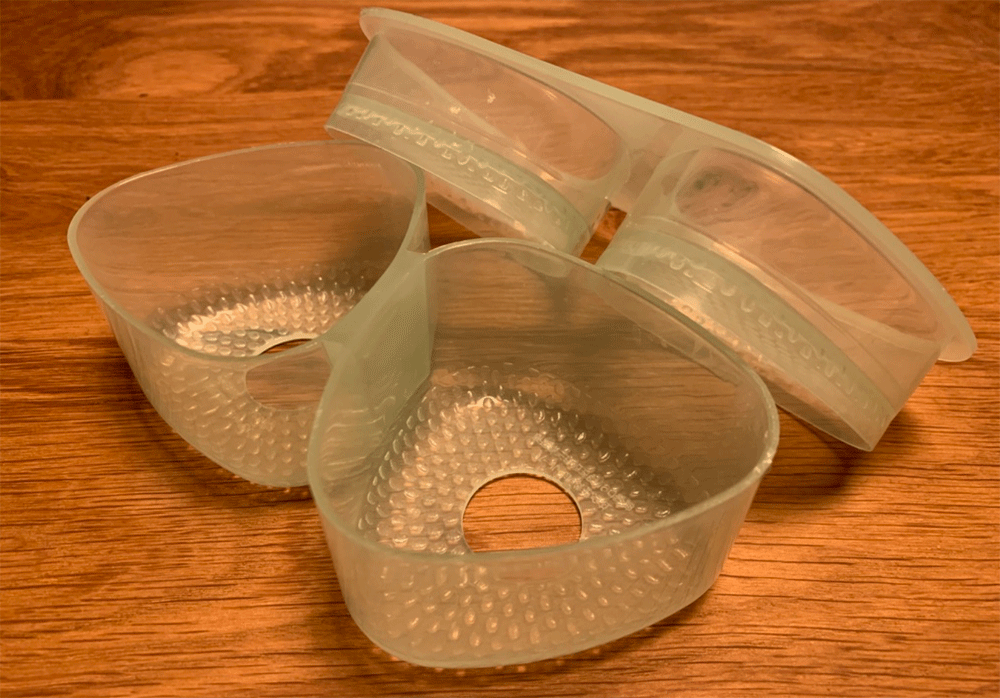
Some people take the piss out of me for (still) having an iPhone 5. Now I know I’m in good company
+1
Sent from my iPhone 5
Ha, I have an Iphone 4 handed down from my wife (who got it from her sister). Her sister now has something new and my wife has her old iphone 5/6/something? I have no idea
look, why do people need huge breakable TV’s in their pockets?
Mine’s an iPhone SE, the 6 camouflaged as a 5. Such a lovely format.
Always a pleasure to see a Campag chain tool among the home tools. That plastic jacket though… I’ll rather haul my Sturmprinz up thank you. 🙂
But your jacket will flap on the way down. You’ll win if it’s wet all day though.
+1
Didn’t know what Sturmprinz means. Oh, those horrible Assos product pictures…
Don’t get why it needs to be flappy. I have a similar jacket from Gore that is tight fitting, even on the arm too. Sure, it may restrict some torso stretches but I can also use it as a gauge for my belly across the seasons 🙂
A proper cable cutter transformed my life after years wrestling with cutting pliers. Mine was from a generic tool shop – much cheaper than the cycling specific ones.
I have a Sony compact phone which is kind of the equivalent of the iPhone 5. Only waterproof and with much better battery life. Perfect for me.
A cable cutter is one of those investments, it doesn’t only cut but cuts clean meaning the cable won’t suddenly start to fray.
+1 for the description of Torq gels. The intensity of flavour is quite something. Rhubarb & Custard is probably my favourite – tho have you tried the Adnams Mosaic Summer Shandy variety? If not, try and get your hands on some if you (like Dan Lloyd) appreciate a “Malt-based recovery beverage”…
Not tried that one, hadn’t seen it but curious/tempted now.
I echo this – I’ve got them from my local bike shop and use them for long runs too. I genuinely look forward to my Apple Crumble or Lemon Drizzle. Unfortunately, everyone else seems to as well.
Raspberry ripple wins for me. Just buy it by the box now
That rice mould looks great! Where is it from? I make my own rice bars and cutting them up is always a hassle the morning of a ride.
I got mine in Japan but they’re sold all over the place, just search for “onigiri mold” and a double one is handy if you plan to make several in one go. The useful thing with the mold is you press the upper half down and the rice compresses and sticks together better vs making a rice bar which can flake apart as you try to eat it (or mine did).
Great thanks I’ll get searching, yeah mine occasionally fall apart which can be really frustrating.
Without wanting to move the thread to a cooking thread…. I will ask – best type of rice to put in the moulds? Sushi?
“Sushi” or Japonica rice is good as it’ll stick together but for westerners it’s often expensive, a small packet is sold as a premium item, short grains seem better, think rice for risotto in Italy. Lighter, fluffy rice like long grain or basmati doesn’t stick so well.
To continue the cooking you put some rice in the mold, drop some filling in the middle, put rice around it, add more rice on top and press the other half of the mold. You can make sweet ones, add salt for hot days etc
In a pinch you can swap arborio rice for sushi rice and vice versa because they’re both very starchy. I’ve made passable risottos from sushi rice, and arancini could conceivably be considered an Italian cousin of onigiri
In the US, Asian markets have bags of sushi rice for cheap, half or less the price in big grocery stores. Worth an extra stop while buying groceries.
Torq gels are spot on, without a dud flavour amongst their range. The guarana supplemented versions provide just the right amount of stimulation to get through a rough patch on a long ride. No affiliation just a happy customer.
Love those Michelin maps; linking together or heading to an area of concenteated “green” roads. Any on-line version available?
The viamichelin website has them, you go for the maps option, look up the area or a town and then usually when you zoom in and out there’s a button that appears saying something like “use original Michelin map”. “Usually” as sometimes it doesn’t come out right, you have to move around the map a bit.
Me too! If I’m planning a route on a Michelin map it means I’m on holiday!
Was going to make a comment contesting the taste of the Torq gel. For me, gels are such artificial products, it’s impossible to make them tasty.
Looks like several here attests to its tastefulness. I would try the gel out rather than making unfounded statements based on my prejudgment and make myself look silly in the due process.
Thanks again to Mr/Mrs ring for a very insightful year of cycling blogging. As ever, this post takes an unusual angle on gear review and manages to entertain as well as give very good advice.
Anyway, here is the new year wishes to our beloved host.
P.S. a friend who strayed from cycling into bodybuilding once tried to convince me to convert to a protin shake + fiber supplements only diet. His passion in trying to convince me and the heated debate resulted may be the reason of my intense distaste of artificial nutrition supplements.
On the subject of gels, it would be good if the industry could club together to produce a package where you rip the top but the tiny tab doesn’t fully separate – I’m sick of seeing these small sticky bits of plastic paper on roads popular for cycling (eg Bobbin Head National Park yesterday). Better still, come up with biodegradable packaging. Even better still, have a warning / plea on there to take your rubbish home with you!
Powerbar gels are already like this.
Torq gels already have the feature you suggest.
Clif Gels have always had a “Litter Leash” on their gels
I never get rid of my gel packet till I get home. It can be an invaluable patch to use on the inside of a tyre if there is problem with a clincher tyre miles from anywhere. Ask me how I know……..
1. I make a big batch of rice cakes. Wrap. Freeze. Grab one morning of the ride. Throw in pocket. Thawed by the time I want it a couple hours in. Labor intensive to make but great sustaining energy.
2. Best equipment development in past 10 years has been wider gearing. Good for newbies, ageing veterans and opens up more terrain to more people. Sure, HTFU still applies for serious riders. My 11×23 cassette is long gone and my knees thank me daily.
I reckon wider tires are one of the best improvements. Bikes that can cope with 25 or even 28mm tires make a long ride just that little bit more comfortable.
For use in Italy, we find the TOURING maps far superior to Michelin. The outfit we worked for 2+ decades ago used Michelin exclusively as they operated in both Italy and France, but I still remember the day we got (via gas station points!) a TOURING (used to be called Touring Club Italia) road atlas for Italy. The folding maps (now treated with a plastic coating to be super durable) were our next purchase and we’ve never looked back (or gotten lost). Happy New Year to all!
Without digging into my collection, I’m gonna guess that section of the Michelin map you’re showing is just south of Grenoble. The key to me is Mont Aiguille just peaking out of the bottom of the map. I was west of there on the other side of the Vercors a few years ago. Really wanted to ride around Mont Aiguille, but it was really cut off by geographical features, namely a huge north-south mountain ridgeline that was too far to ride around from our base in the western edge of the Vercors near the Combe Laval.